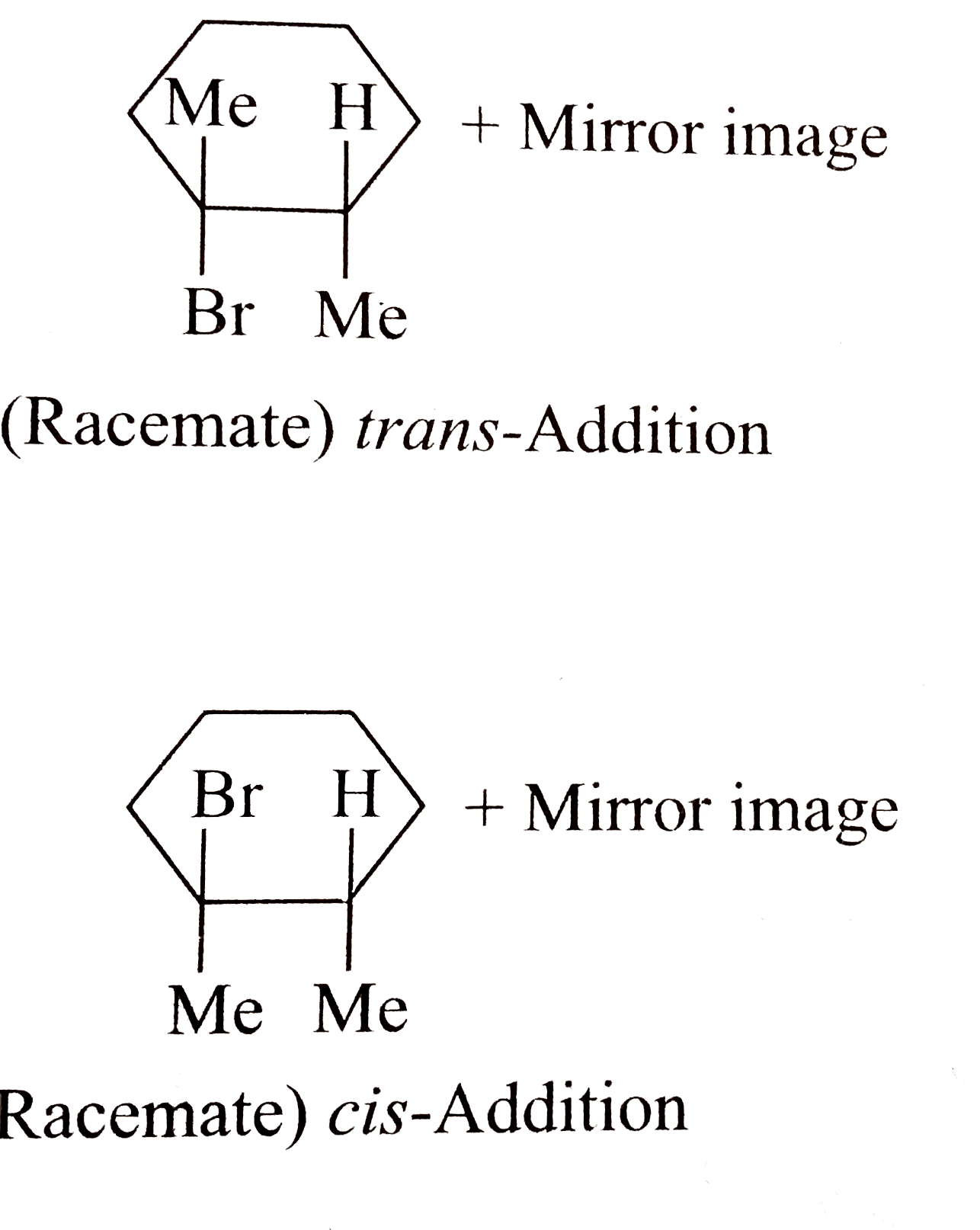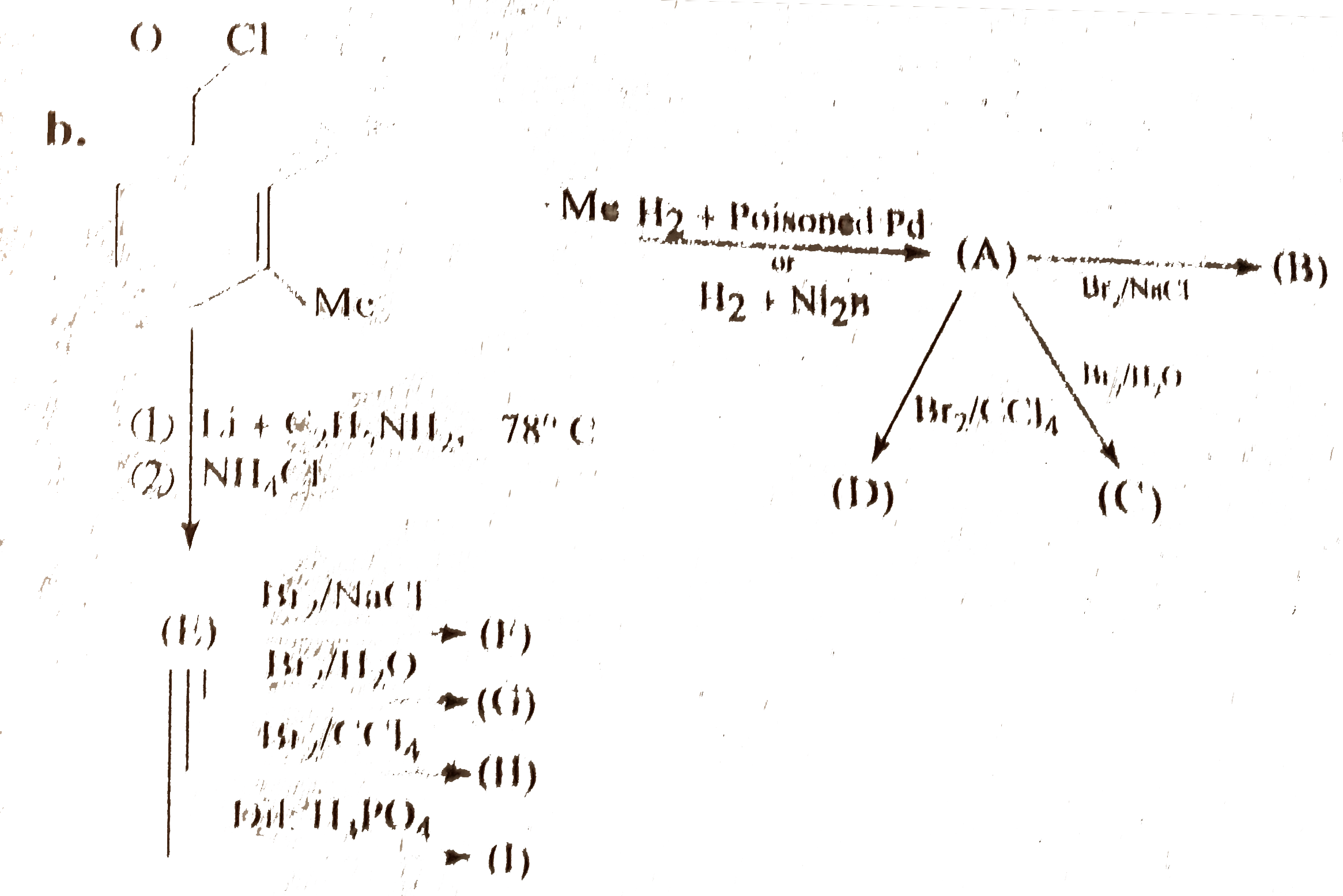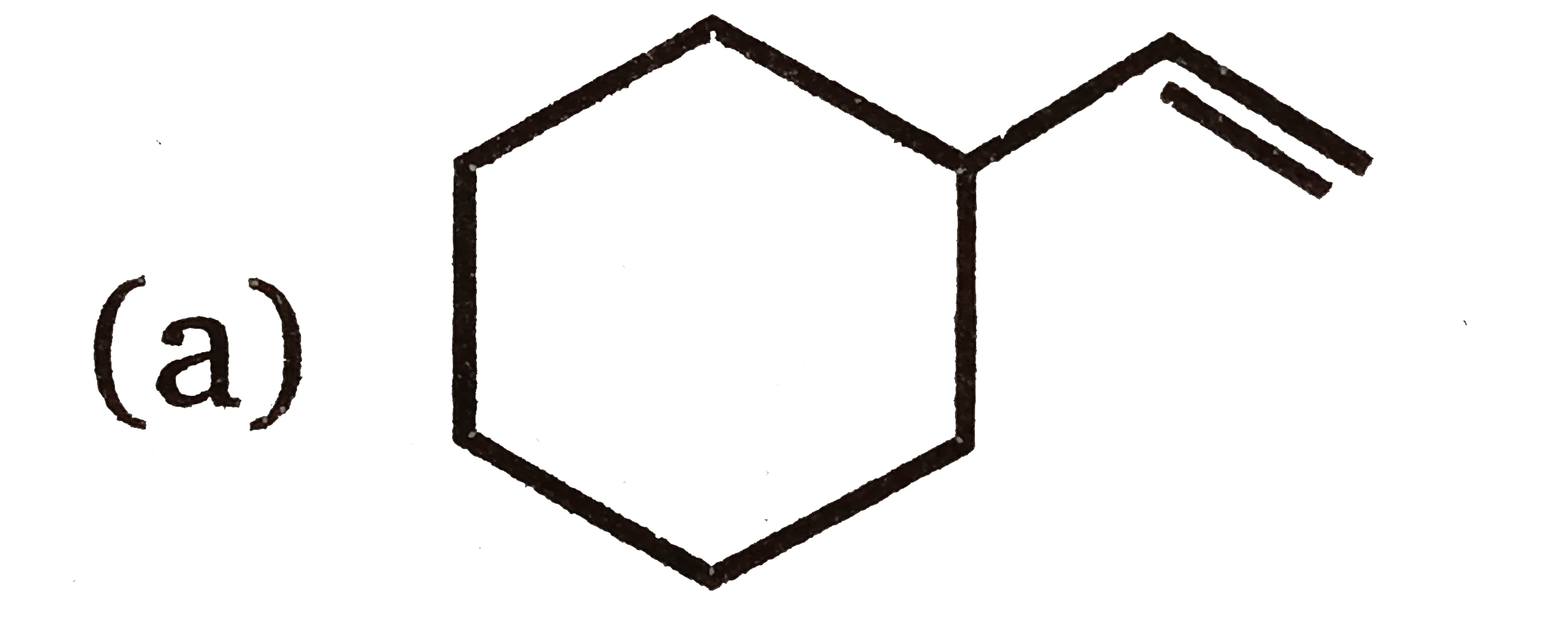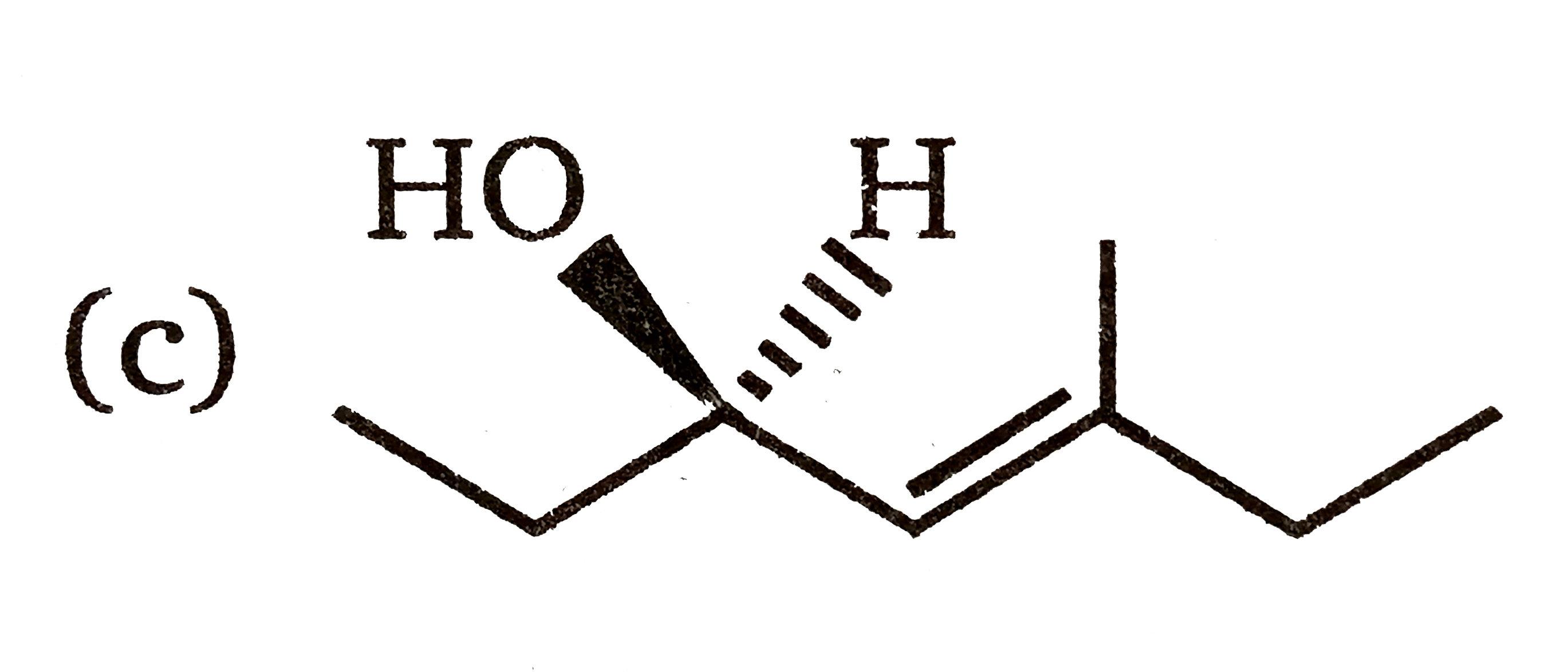1,2-Dimethylcyclohexene undergoes only trans-addition with HBr in non-polar solvents but both cis-and trans-additions occur with aq. Acid. Explain.
This sterospecific reaction proceeds through a bridged cation like the bromonium ion where H replaces Br. The intermediate may actually be a π -complex. In the absence of a solvent that can satbilise a free R⊕,BrӨ attacks the protonated complex from the opposite side resulting in trans (anti) addition.
In the case of a polar solvent such as H2O,the protonated complex collapses to the free R⊕, which now reacts from both sides (faces) and gives both cis− and trans-additions.
 .
.
Topper's Solved these Questions
- ORGANIC REACTION MECHANISMBOOK - CENGAGE CHEMISTRYCHAPTER - ORGANIC REACTION MECHANISMEXERCISE - Subjective
19 Videos
- ORGANIC REACTION MECHANISMBOOK - CENGAGE CHEMISTRYCHAPTER - ORGANIC REACTION MECHANISMEXERCISE - Comprehension
36 Videos
- ORGANIC REACTION MECHANISMBOOK - CENGAGE CHEMISTRYCHAPTER - ORGANIC REACTION MECHANISMEXERCISE - Analytical and Descriptive
6 Videos
- NCERT BASED EXERCISEBOOK - CENGAGE CHEMISTRYCHAPTER - NCERT BASED EXERCISEEXERCISE - Chemical Equilibrium
72 Videos
- P-BLOCK GROUP 13 - BORON FAMILYBOOK - CENGAGE CHEMISTRYCHAPTER - P-BLOCK GROUP 13 - BORON FAMILYEXERCISE - Exercise Archives (Subjecive)
9 Videos
Similar Questions
a.

b.
c. Tetrachloroethane does not give the test for unsaturateion , i.e., it does not decolourise Br2 water solution. Explain why.
d.
e. Ricinoleic acid is isolated from castor oil. The structure of the compound is :

f. Explain why 1,2−dimethyl cyclopenten or 1,2−dimethyl cyclohexen with HBr undergoes anti−( or trans−) addition but with aqueous acid undergoes both anti− and syn−( trans and cis−) additions.
View SolutionWrite the structures of cis- and trans-isomers of but-2-enoic acid.
View Solution
Knowledge Check
What characterstic is the best common to both cis-2-butene and trans-2-butene ?
AB.P.BDipole momentCheat of hydrogenationDProduct of hydrogenationWhich of the following, when undergoing addition of HBr, will form ONLY a pair of diastereomers?
A B
B C
C D
D
The addition of bromine to cyclopentene provides evidence for bromonium ion immediate in bromine addition. It follows ionic mechanism. When cyclopentene reacts with bromine in presence of Cl4 anti addition occurs and gives trans isomer so addition of halogen to an alkene is a stereospecific reaction. cis alkene on addition with halogen gives racemic mixture and trans álkene on addition may give meso products.
trans-2-butene on reaction with Br2 in CCl4 forms mainlyA±2,3− dibromobutaneB+2,3−dibromobutaneC−2,3−dibromobutaneDMeso 2, 3-dibromobutane
Write the structures of cis- and trans-isomers of but-2-enoic acid.
View SolutionWrite the structures of cis- and trans-isomers of but-2-enoic acid.
View SolutionEqual amounts of (e, e) and (a, a) conformers of trans-1,2-dichloro cyclohexane exist in non-polar solvents but the (e, e) conformer exists in polar solvents. Explain.
View SolutionEqual amounts of (e, e) and (a, a) conformers of trans-1,2-dichloro cyclohexane exist in non-polar solvents but the (e, e) conformer exists in polar solvents. Explain.
View SolutionWhich of the two : trans-but-2-ene-or trans- pent-2- ene is non polar ?
View Solution
